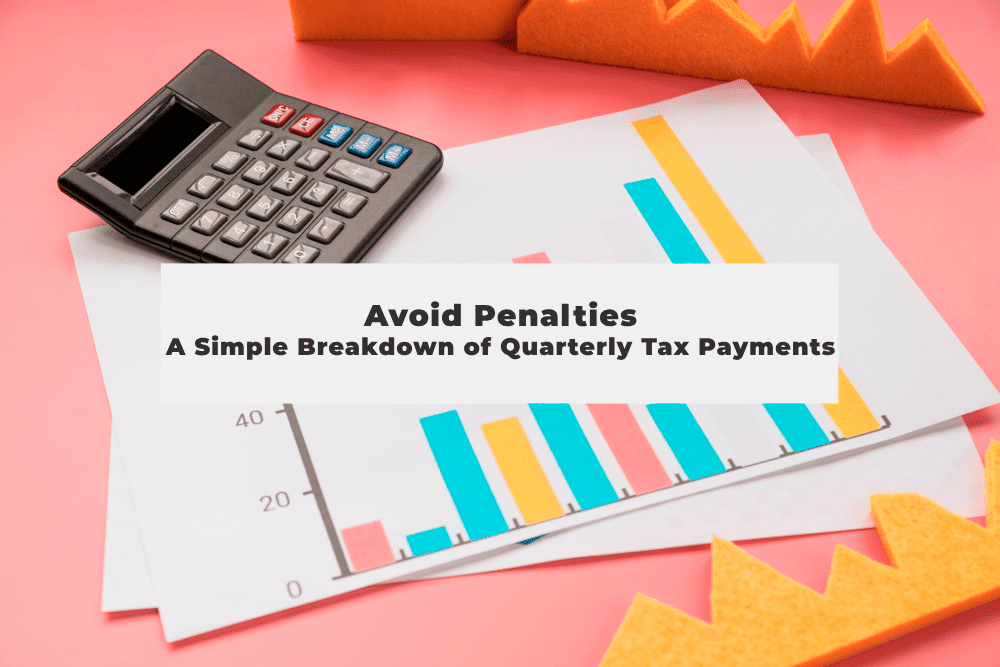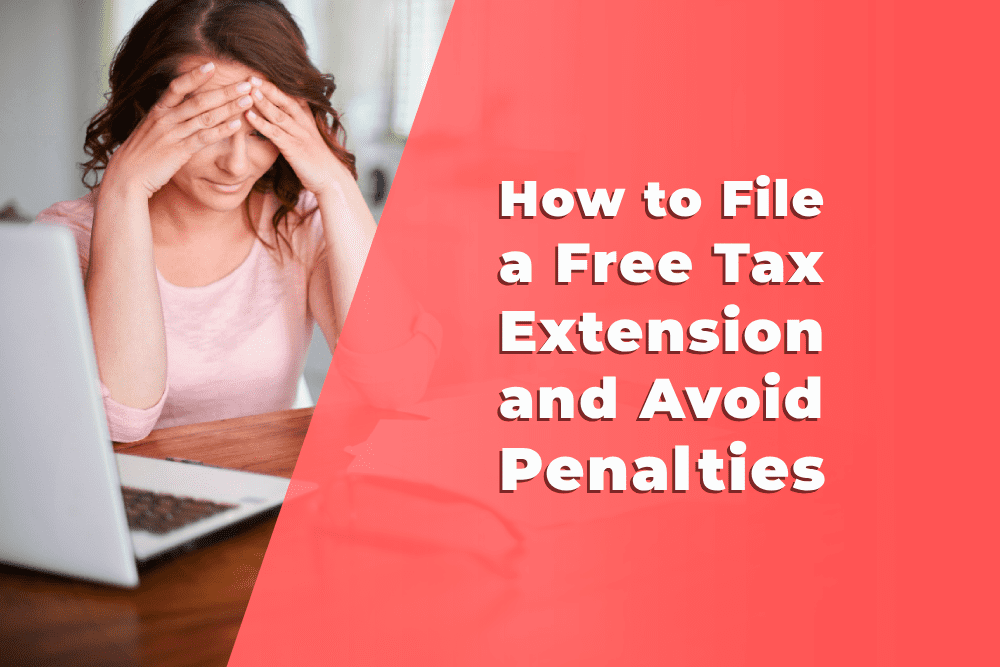When it comes to taxes, deadlines are crucial for avoiding penalties. But sometimes, life or business gets in the way, and you need extra time to file your taxes. Fortunately, the IRS allows you to file a Tax Extension for free, which can help partnerships avoid unnecessary penalties and stress. In this guide, we’ll explain how to file a free tax extension, its benefits, and how it ties into Tax Filing for Partnerships. We’ll also touch on the Quarterly estimated taxes importance, which plays a key role in maintaining your financial health while extending your tax filing deadline.
Let’s break it down step by step in simple, easy-to-understand language.
What is a Tax Extension?
A Tax Extension allows you to push back the deadline for filing your tax return. For partnerships, the standard filing deadline is March 15th, but with an extension, you can have until September 15th to submit your returns without facing late-filing penalties. Importantly, this extension only applies to filing the paperwork — not paying any taxes owed. If your partnership owes taxes, you must estimate and pay by the original deadline to avoid interest and late-payment penalties.
How to File a Free Tax Extension for Partnerships
Know the Form You Need: Form 7004 Partnerships can easily request a Tax Extension by filling out IRS Form 7004, which is specifically for business extensions. This form is short, simple, and can be filed electronically. The IRS even offers free options to e-file this form, so there’s no need to pay a third-party service.
Step-by-Step Guide to Filing Form 7004 Here’s how you can fill out and file Form 7004:
- Enter Your Partnership’s Information: This includes your business name, Employer Identification Number (EIN), and address.
- Select the Correct Tax Return Form: For partnerships, you’ll typically check the box for Form 1065.
- Estimate Any Tax Owed: Remember, the extension is for filing, not for paying. If your partnership owes taxes, estimate the amount and pay it by the original due date.
- Submit Electronically: Most tax software programs offer free electronic filing for extensions. The IRS also has a list of free e-file providers on their website.
Check for Confirmation Once you’ve filed Form 7004, the IRS will send a confirmation if your extension request has been accepted. Keep this confirmation for your records as proof that you filed for a Tax Extension.
Why Filing a Tax Extension is Important for Partnerships
The filing deadline for partnerships can come up fast, especially when you’re managing other aspects of your business. By requesting a Tax Extension, you gain extra time to gather your documents and ensure everything is accurate, reducing the risk of filing errors that could trigger an audit or penalties.
Moreover, partnerships must file Quarterly estimated taxes throughout the year, and not paying on time can result in interest and penalties. Here’s why Quarterly estimated taxes importance is critical:
- Keeps Your Finances on Track: Paying quarterly estimated taxes ensures you stay up to date with your tax obligations and avoid a large lump sum due at the end of the year.
- Avoids Penalties: Even if you file for an extension, the IRS expects any taxes owed to be paid on time. Paying quarterly estimated taxes reduces the risk of penalties for underpayment.
What Happens If You Don’t File for a Tax Extension?
If your partnership doesn’t file a Tax Extension or misses the tax filing deadline, you could face steep penalties. The late filing penalty for partnerships is calculated at $210 per month for each partner if the return is filed after the due date. This means if you have a two-person partnership and you miss the deadline by just one month, you could owe $420 in penalties — and it gets worse the longer you delay.
This is why it’s essential to take advantage of the free Tax Extension. It buys you time to organize your finances, but it’s not a free pass to delay payment if you owe taxes. Always estimate and pay taxes by the original deadline to avoid late-payment penalties.
How Filing a Tax Extension Affects Quarterly Estimated Taxes
When you file for a Tax Extension, it doesn’t affect your obligation to make quarterly tax payments. The Quarterly estimated taxes importance remains the same. If you underpay your estimated taxes, you may still face penalties, even if you filed for an extension.
Here’s a quick breakdown of the estimated tax due dates:
- First Quarter: April 15
- Second Quarter: June 15
- Third Quarter: September 15
- Fourth Quarter: January 15 of the following year
((Insert IRS link here: Quarterly estimated tax payments — Link to the IRS page explaining how to calculate and pay quarterly estimated taxes.))
FAQs About Tax Extensions for Partnerships
Q: Does filing a tax extension give me more time to pay my taxes? No, a Tax Extension only gives you more time to file your return, not to pay taxes owed. You must estimate and pay any taxes by the original deadline to avoid penalties.
Q: How do I know if my tax extension request has been accepted? The IRS will send you a confirmation once they receive and approve your Form 7004. Keep this confirmation for your records.
Q: What happens if I miss the extended deadline? If you fail to file by the extended deadline (September 15th for partnerships), you’ll face late-filing penalties. These penalties can add up quickly, so make sure to meet the new deadline.
Q: What is the penalty for underpaying my quarterly estimated taxes? If you don’t pay enough in quarterly estimated taxes, you could face underpayment penalties, even if you file for a Tax Extension.
You may also like to read:
Avoid Penalties: A Simple Breakdown of Quarterly Tax Payments
As a small business owner, freelancer, or independent contractor, you may already know that paying taxes isn’t just…
Read More

Final Tips for Filing a Tax Extension and Avoiding Penalties
File Form 7004 Early: Don’t wait until the last minute to file your Tax Extension. This gives you peace of mind and ensures you avoid last-minute complications.
Pay Taxes On Time: Always estimate and pay any taxes owed by the original deadline, even if you file for an extension.
Stay on Top of Quarterly Payments: The Quarterly estimated taxes importance cannot be overstated. Paying your quarterly taxes on time helps you avoid penalties and manage your cash flow more effectively.
Consult a Professional: If you’re unsure about filing a Tax Extension or calculating your estimated taxes, consult with a tax professional to ensure everything is handled correctly.
Conclusion
Filing a free Tax Extension for your partnership is a simple and smart way to avoid penalties and get extra time to prepare your tax returns. However, remember that paying your taxes on time — and keeping up with your Quarterly estimated taxes — is essential to staying in good standing with the IRS. By following the steps outlined above, you can easily file for an extension and make sure your partnership’s finances are in order.



